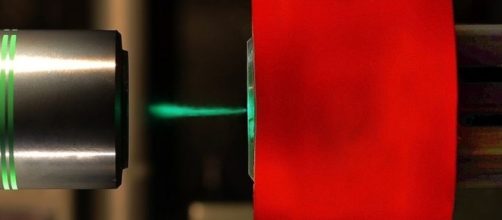Recently a group of Harvard scientists achieved something that was thought possible only in theory, according to Space Daily, and have created metallic hydrogen. They performed this feat by pressing a small sample of hydrogen between two pieces of specially treated synthetic diamond at more than 71.7 million pounds per square inch, greater than it exists at the center of the Earth. Scientists predict that the resulting material will remain stable when the pressure is removed.
The implications for both electrical transmission and space travel should a way be found to produce metallic hydrogen at an industrial scale are mind numbing.
Metallic hydrogen achieves something that has been a holy grail for materials science, it being a room temperature superconductor. Storage coils made of the material would be able to store electricity without any loss until it is used when needed, a crucial advance when using Renewable Energy sources like solar and wind that are not available 24/7. Levitating trains, electric cars, and electrical transmission wires would also benefit using the new material. Electricity transmitted through a superconducting material would not be lost along the way, increasing the availability of energy without having to build a single power plant.
The application of metallic hydrogen for space travel is something that has scientists really excited.
Since it takes a lot of energy to create the material, it can be used as rocket fuel which would then release that energy. Aerospace engineers measure the efficiency of a rocket motor through specific impulse, measured as the change of momentum by unit of propellant expended. A typical chemical rocket has a specific impulse of 450 seconds.
A nuclear thermal rocket would have a specific impulse of 850 seconds. A rocket using metallic hydrogen as a fuel would, in theory, have a specific impulse of 1,700 seconds.
Such technology would enable a single stage to orbit launch system and spacecraft with the range that would allow human exploration of the outer planets.
A metallic hydrogen rocket would not have to violate known physical laws, like the EM drive. Since hydrogen is the most common element in the universe, metallic hydrogen factories could, in theory, be set up anywhere where it exists in any significant quantity.
All depends on developing the ability to create metallic hydrogen that is metastable and at scale.

